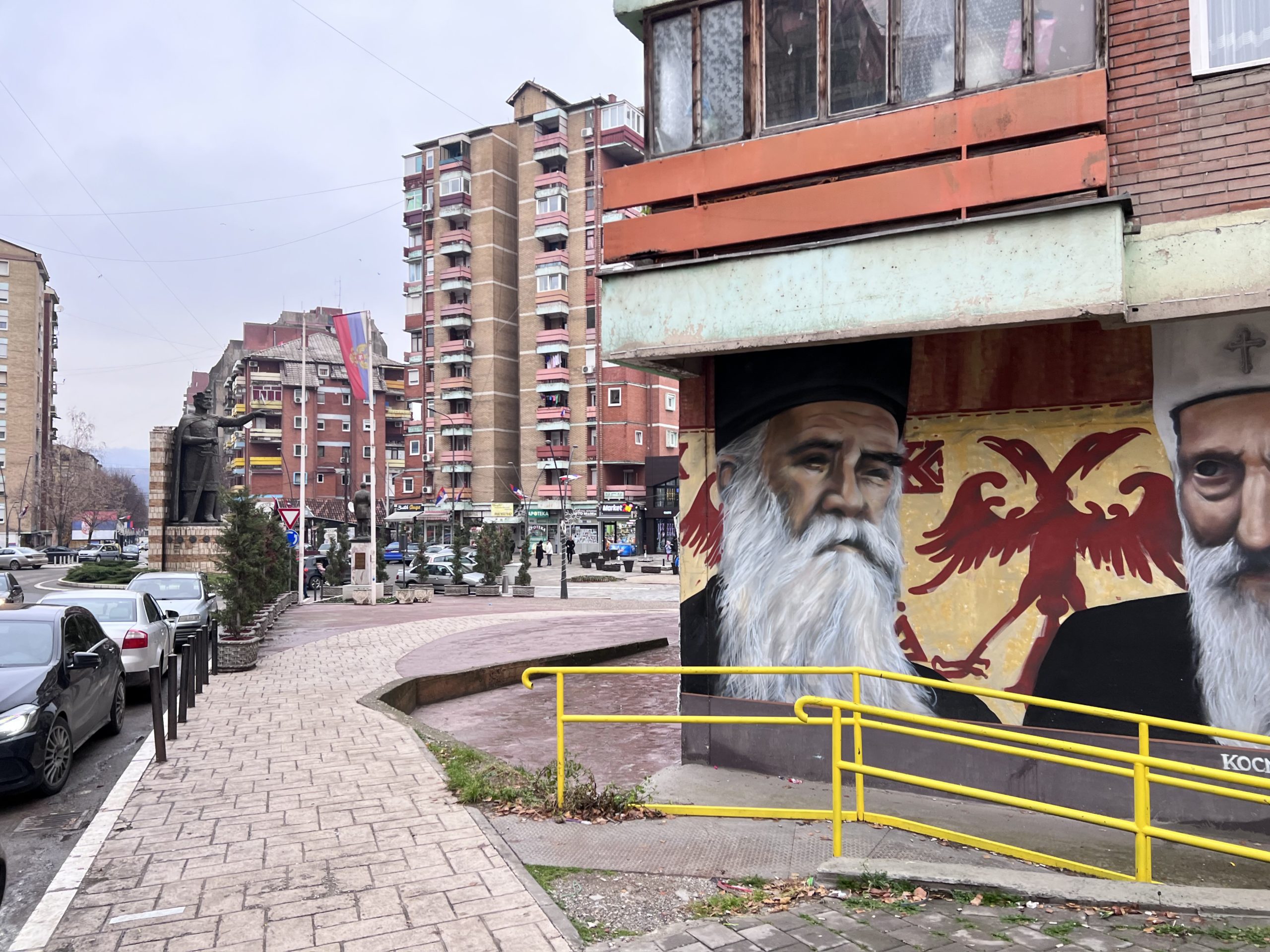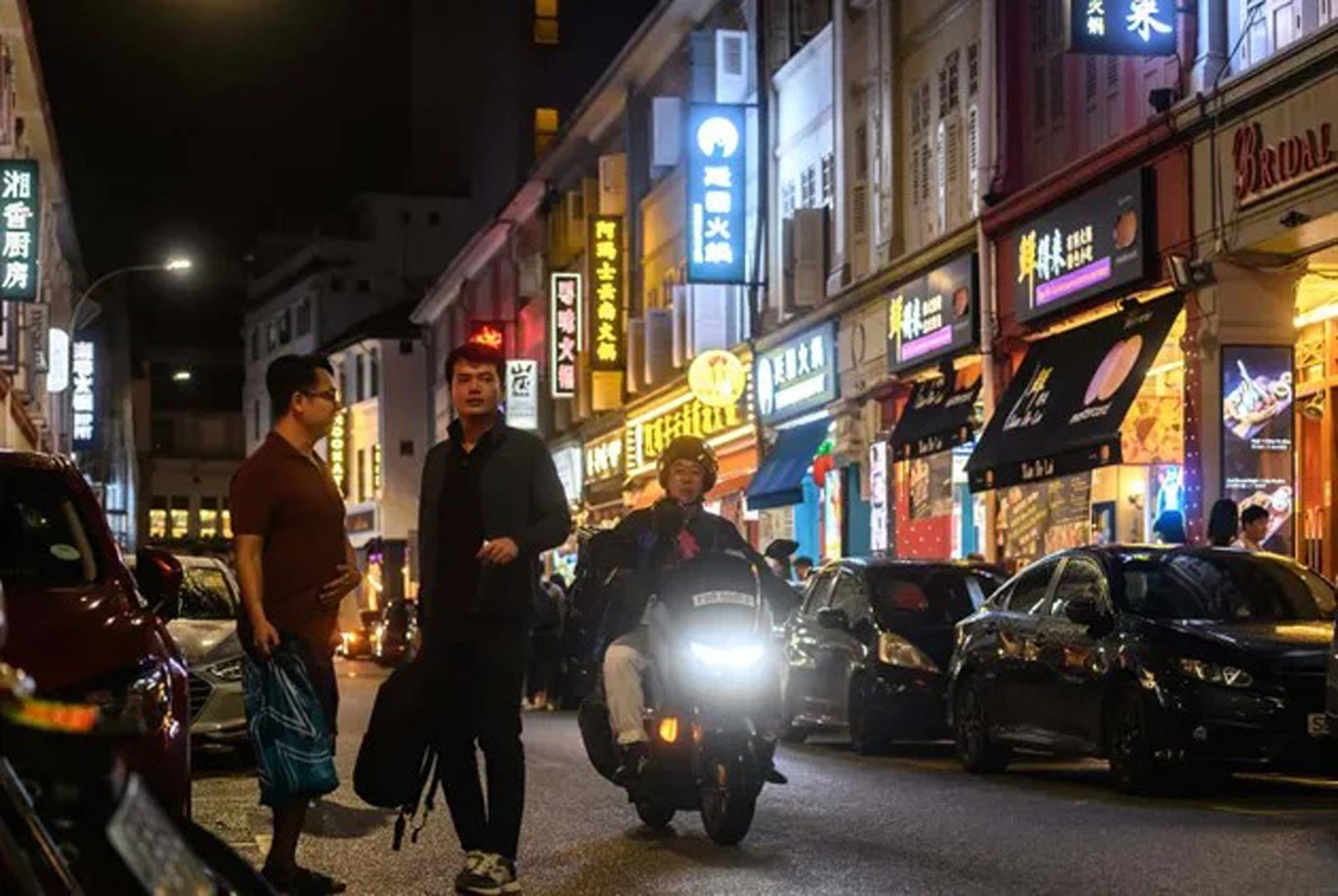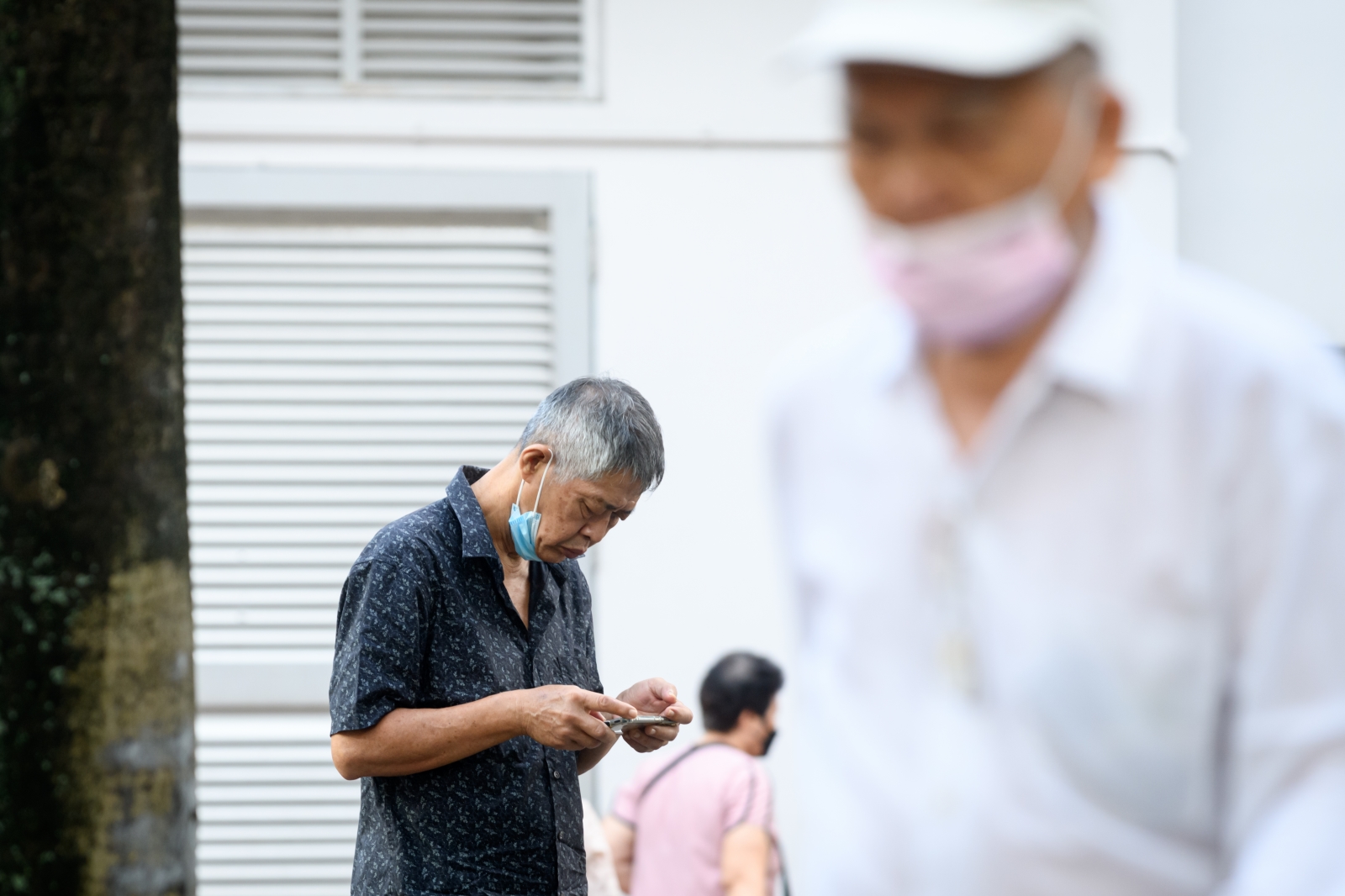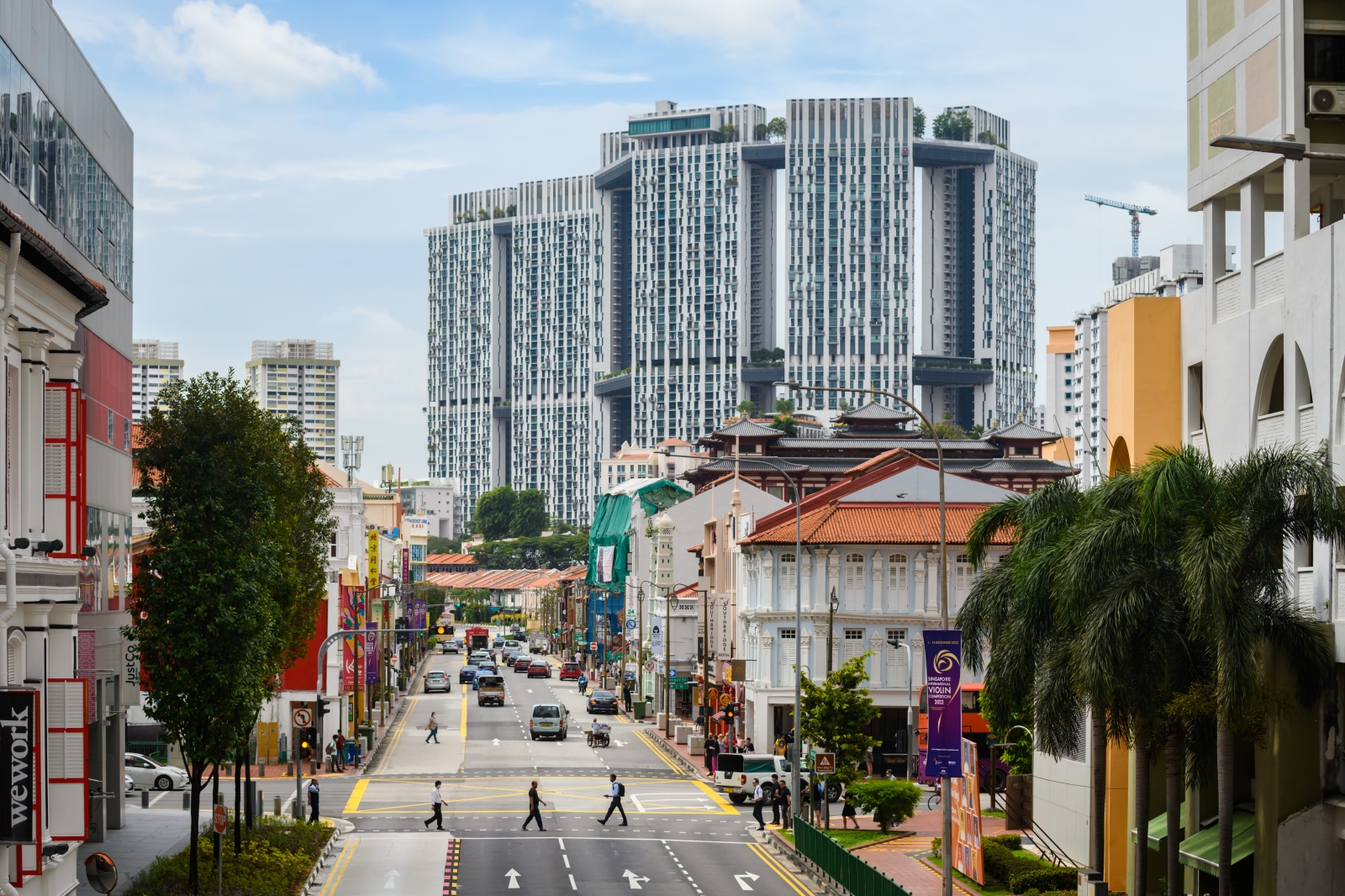The country is doomed to a cycle of crises
BY TIM JUDAH
Tim Judah covers the Balkans for The Economist.
Tim Judah covers the Balkans for The Economist.
He is the author of several books on Kosovo and the region.
timjudah1
January 3, 2023
North Mitrovica, Kosovo
There is a strict timetable to crises in Kosovo. It runs like this. First, after a disagreement between Serbia’s leader and Kosovo’s, a deadline is set by the Kosovo side to do this or that, or barricades are erected in Serbian-inhabited north Kosovo. The diplomats go into hyperdrive, harsh words are spoken, and the Serbian Army deploys to the border, making sure that clips of military convoys circulate on social media. Serbian nationalists fantasise that they are actually going to do something and Serbian tabloids froth that Kosovo-Albanians are about to wage war against their people.
At this point, parts of the Western media wake up and journalists, who never seem to clock that Nato has thousands of troops in Kosovo pledged to protect it from Serbia, think that it might invade. Then, deal done, the barricades come down until the next time.
Today, we are at the fag end of the latest cycle. The barricades which stood for 20 days have come down and everyone has gone home — but this time, it was a pretty close-run thing. The barricades were in fact trucks blocking the roads in some 14 places. Just over a week ago, as I visited one in the village of Rudare, a colleague pointed out a petrol tanker. People were not very happy about it, he said. It was full; if there were a violent incident, it could explode.
As we spoke, judges, teachers, doctors — in fact it seemed the entire haute bourgeoisie of Serbian north Kosovo — wandered up and down, chatting to friends and warming their hands on flaming braziers. Some were here because they wanted to be, others because their political appointee bosses had ordered them to be. Leaders of the main Kosovo Serb party were here too. At one point, a car zoomed up and four masked young men jumped out and strode off purposefully. In the nearby divided town of Mitrovica, where Serbs live in the north and Albanians in the south, the north is festooned with Serbian flags and spray-painted with stencilled crests of something called the “Northern Brigade”. They read: “Don’t worry… We are waiting!” But who are they? A Serbian militia in waiting? No one knows for sure.
In hushed tones, residents tell me that, in the last year, 600 men have been sent for military training in Serbia. But there is no way to know, unless you start asking questions of people who would really not appreciate them, what is true and what is a misinformation spread by BIA, Serbia’s intelligence service, which is widely believed to hold the whip hand around here. Meanwhile, locals were queuing at cashpoints. With the barricades having closed the two border posts in the north, they were worried that banks would run out of cash.
timjudah1
January 3, 2023
North Mitrovica, Kosovo
There is a strict timetable to crises in Kosovo. It runs like this. First, after a disagreement between Serbia’s leader and Kosovo’s, a deadline is set by the Kosovo side to do this or that, or barricades are erected in Serbian-inhabited north Kosovo. The diplomats go into hyperdrive, harsh words are spoken, and the Serbian Army deploys to the border, making sure that clips of military convoys circulate on social media. Serbian nationalists fantasise that they are actually going to do something and Serbian tabloids froth that Kosovo-Albanians are about to wage war against their people.
At this point, parts of the Western media wake up and journalists, who never seem to clock that Nato has thousands of troops in Kosovo pledged to protect it from Serbia, think that it might invade. Then, deal done, the barricades come down until the next time.
Today, we are at the fag end of the latest cycle. The barricades which stood for 20 days have come down and everyone has gone home — but this time, it was a pretty close-run thing. The barricades were in fact trucks blocking the roads in some 14 places. Just over a week ago, as I visited one in the village of Rudare, a colleague pointed out a petrol tanker. People were not very happy about it, he said. It was full; if there were a violent incident, it could explode.
As we spoke, judges, teachers, doctors — in fact it seemed the entire haute bourgeoisie of Serbian north Kosovo — wandered up and down, chatting to friends and warming their hands on flaming braziers. Some were here because they wanted to be, others because their political appointee bosses had ordered them to be. Leaders of the main Kosovo Serb party were here too. At one point, a car zoomed up and four masked young men jumped out and strode off purposefully. In the nearby divided town of Mitrovica, where Serbs live in the north and Albanians in the south, the north is festooned with Serbian flags and spray-painted with stencilled crests of something called the “Northern Brigade”. They read: “Don’t worry… We are waiting!” But who are they? A Serbian militia in waiting? No one knows for sure.
In hushed tones, residents tell me that, in the last year, 600 men have been sent for military training in Serbia. But there is no way to know, unless you start asking questions of people who would really not appreciate them, what is true and what is a misinformation spread by BIA, Serbia’s intelligence service, which is widely believed to hold the whip hand around here. Meanwhile, locals were queuing at cashpoints. With the barricades having closed the two border posts in the north, they were worried that banks would run out of cash.

A street in North Mitrovic
Ask people in north Mitrovica what they want and, at the end of the day, it is just a normal life — the type that no one here has enjoyed for more than a quarter of a century. But how likely is this? How to cut Kosovo’s Gordian Knot, which has left the fate of Serbs and Kosovo-Albanians (and Kosovo and Serbia) tied to one another? The Kosovo war ended in 1999, but still the diplomats and political leaders have been unable or unwilling to agree on a final framework for peaceful coexistence.
In the wake of Yugoslavia’s disintegration in the Nineties, Kosovo, Serbia’s southern province, remained locked within Serbia — even though its population was overwhelmingly ethnic Albanian, rejected Serbian rule and was repressed by Slobodan Milosevic, Serbia’s then leader who had stripped the province of its autonomy. Following the Kosovo war of 1998-99 between Kosovo-Albanian guerrillas and Serbia, and then Nato’s intervention, Kosovo became a UN protectorate. In 2008, it declared independence. This was recognised by most, but not all, Western countries, and rejected by Serbia, Russia and China among others. Kosovo’s Albanians argued they had the right to self-determination; Serbia argued that its territorial integrity trumped that, even though no one in Serbia actually wanted or wants to reintegrate a region full of hostile Albanians.
Of Kosovo’s population of 1.8 million, some 100,000-120,000 are Serbs. More than half live in central and south Kosovo, while the rest live in the north, a compact area abutting Serbia. Now, say local Serbs in the north, the tables have turned. Marko Jaksic, a lawyer and political activist from north Mitrovica, says that Albin Kurti, Kosovo’s prime minister, “is doing the same things as Milosevic during the Nineties, only we have changed sides.” It is the type of argument that makes Kosovo-Albanians incandescent with rage.
Jaksic and I were talking in the Number One, a hotel café a few hundred metres from the bridge over the Ibar which divides the city in two. He starts the conversation by pointing out that exactly 10 years ago I had asked him what the solution for Kosovo was, and that he had said that the border between Kosovo and Serbia was not “up there”, meaning north of where we were, but “on the bridge”. He believes that Kosovo should be partitioned. It is an idea which comes and goes like the tide. Until he went to The Hague in 2020 to answer charges of war crimes, Hashim Thaci, until then Kosovo’s president, and Serbia’s leader Aleksandar Vucic toyed with the idea, but key Western countries moved to quash it.
Nor was partition popular in Kosovo and Serbia. The problem was not north Kosovo, but rather the precedent. If north Kosovo returned to Serbia, then what about the Albanian-populated Presevo valley in Serbia or the Albanian-inhabited regions of North Macedonia or the Serb and Croat regions of Bosnia and Herzegovina? So, Pandora’s Box remains closed. How, then, can Kosovo-Serbs live normal lives in Kosovo, especially in the north?
The answer to this question is surprisingly simple. With political will there is no issue between Kosovo and Serbia, and between Serbs and Albanians, that cannot be resolved or at least fudged. The two sides have been talking in an EU-sponsored dialogue for more than a decade and plenty of agreements have been struck — even if they have not all been implemented.
The Russian invasion of Ukraine has also injected new vigour into negotiations, which are led by the EU’s Miroslav Lajcak, who is supported by Gabriel Escobar, an American diplomat. However, since June, they have been firefighting, tamping down crises over number plates, identity cards and now barricades. But they have a plan, supported by France and Germany, which could be the basis for a long-term settlement. The diplomats talk of the “two Germanies”, by which they mean that Serbia and Kosovo could live side-by-side (like the two Cold War Germanies did), not recognising one another officially but as independent states.
But this is only half of the equation. In return for de facto recognition, which means being treated like a neighbouring state by Serbia, Kosovo is expected to abide by a commitment it signed in 2013 by which Serbian municipalities in Kosovo could form some type of association, giving them effective autonomy in fields such as health and education. Kosovo’s constitutional court has rejected this and Kurti campaigned vigorously against it in opposition, but now the pressure is on from his Western backers to find a way to deliver it in one form or another.
The current crisis has set back the cause of normalisation badly. Serbs have resigned from parliament, from the judiciary and, in the north, from the Kosovo police force. They also resigned from local assemblies, which triggered elections for new ones which have now been postponed until April after electoral offices in the north were attacked. Tatjana Lazarevic, the editor of the KoSSev news site in the north, says that since the Serbs quit the police, Albanian members of the Kosovo police have been sent north and locals see them “100% as an occupation force”. She adds that Serbs in the north “didn’t want to integrate into Kosovo state… and neither do they want that today”. But if there is a normalisation deal between Kosovo and Serbia, she thinks, people will just live with it.
If that were the case, if there were a deal, what choice would Kosovo Serbs have? Kosovo’s north can be a dangerous place. If it is in Serbia’s interest to make a deal, dissent won’t be tolerated. This is a place where politics and organised crime overlap, even more so than everywhere else in the Balkans.
Despite the high-stakes game played with the barricades these last few weeks, it is not all doom and gloom. Lajcak told me: “Tensions have never been higher in 20 years; mistrust has never been deeper.” But Jeff Hovenier, the American ambassador to Kosovo, struck a more optimistic note. He told me that, while the ultimate goal was mutual recognition of Kosovo and Serbia, “which is unfortunately not possible right now, today’s challenges can still be overcome. If you see this agreement, this work as an interim step towards that… there are real possibilities.”
Ivan Vejvoda, a Serbian analyst and head of the Europe’s Futures programme of the Institute for Human Sciences in Vienna concurs. Despite the current stand-off, “both sides realise they need to do this, but they are still looking for a way in which they turn out to be the winning side, but there is no winner in this. Everyone will lose out on something — or rather, no one will get everything they want. But that’s exactly what compromise is about: to achieve a situation where one goes forward.” He then proceeded to list examples from Northern Ireland to the Faroe Islands to the Basque country to the South Tyrol where all manner of workable solutions for minority rights have been secured.
Ask people in north Mitrovica what they want and, at the end of the day, it is just a normal life — the type that no one here has enjoyed for more than a quarter of a century. But how likely is this? How to cut Kosovo’s Gordian Knot, which has left the fate of Serbs and Kosovo-Albanians (and Kosovo and Serbia) tied to one another? The Kosovo war ended in 1999, but still the diplomats and political leaders have been unable or unwilling to agree on a final framework for peaceful coexistence.
In the wake of Yugoslavia’s disintegration in the Nineties, Kosovo, Serbia’s southern province, remained locked within Serbia — even though its population was overwhelmingly ethnic Albanian, rejected Serbian rule and was repressed by Slobodan Milosevic, Serbia’s then leader who had stripped the province of its autonomy. Following the Kosovo war of 1998-99 between Kosovo-Albanian guerrillas and Serbia, and then Nato’s intervention, Kosovo became a UN protectorate. In 2008, it declared independence. This was recognised by most, but not all, Western countries, and rejected by Serbia, Russia and China among others. Kosovo’s Albanians argued they had the right to self-determination; Serbia argued that its territorial integrity trumped that, even though no one in Serbia actually wanted or wants to reintegrate a region full of hostile Albanians.
Of Kosovo’s population of 1.8 million, some 100,000-120,000 are Serbs. More than half live in central and south Kosovo, while the rest live in the north, a compact area abutting Serbia. Now, say local Serbs in the north, the tables have turned. Marko Jaksic, a lawyer and political activist from north Mitrovica, says that Albin Kurti, Kosovo’s prime minister, “is doing the same things as Milosevic during the Nineties, only we have changed sides.” It is the type of argument that makes Kosovo-Albanians incandescent with rage.
Jaksic and I were talking in the Number One, a hotel café a few hundred metres from the bridge over the Ibar which divides the city in two. He starts the conversation by pointing out that exactly 10 years ago I had asked him what the solution for Kosovo was, and that he had said that the border between Kosovo and Serbia was not “up there”, meaning north of where we were, but “on the bridge”. He believes that Kosovo should be partitioned. It is an idea which comes and goes like the tide. Until he went to The Hague in 2020 to answer charges of war crimes, Hashim Thaci, until then Kosovo’s president, and Serbia’s leader Aleksandar Vucic toyed with the idea, but key Western countries moved to quash it.
Nor was partition popular in Kosovo and Serbia. The problem was not north Kosovo, but rather the precedent. If north Kosovo returned to Serbia, then what about the Albanian-populated Presevo valley in Serbia or the Albanian-inhabited regions of North Macedonia or the Serb and Croat regions of Bosnia and Herzegovina? So, Pandora’s Box remains closed. How, then, can Kosovo-Serbs live normal lives in Kosovo, especially in the north?
The answer to this question is surprisingly simple. With political will there is no issue between Kosovo and Serbia, and between Serbs and Albanians, that cannot be resolved or at least fudged. The two sides have been talking in an EU-sponsored dialogue for more than a decade and plenty of agreements have been struck — even if they have not all been implemented.
The Russian invasion of Ukraine has also injected new vigour into negotiations, which are led by the EU’s Miroslav Lajcak, who is supported by Gabriel Escobar, an American diplomat. However, since June, they have been firefighting, tamping down crises over number plates, identity cards and now barricades. But they have a plan, supported by France and Germany, which could be the basis for a long-term settlement. The diplomats talk of the “two Germanies”, by which they mean that Serbia and Kosovo could live side-by-side (like the two Cold War Germanies did), not recognising one another officially but as independent states.
But this is only half of the equation. In return for de facto recognition, which means being treated like a neighbouring state by Serbia, Kosovo is expected to abide by a commitment it signed in 2013 by which Serbian municipalities in Kosovo could form some type of association, giving them effective autonomy in fields such as health and education. Kosovo’s constitutional court has rejected this and Kurti campaigned vigorously against it in opposition, but now the pressure is on from his Western backers to find a way to deliver it in one form or another.
The current crisis has set back the cause of normalisation badly. Serbs have resigned from parliament, from the judiciary and, in the north, from the Kosovo police force. They also resigned from local assemblies, which triggered elections for new ones which have now been postponed until April after electoral offices in the north were attacked. Tatjana Lazarevic, the editor of the KoSSev news site in the north, says that since the Serbs quit the police, Albanian members of the Kosovo police have been sent north and locals see them “100% as an occupation force”. She adds that Serbs in the north “didn’t want to integrate into Kosovo state… and neither do they want that today”. But if there is a normalisation deal between Kosovo and Serbia, she thinks, people will just live with it.
If that were the case, if there were a deal, what choice would Kosovo Serbs have? Kosovo’s north can be a dangerous place. If it is in Serbia’s interest to make a deal, dissent won’t be tolerated. This is a place where politics and organised crime overlap, even more so than everywhere else in the Balkans.
Despite the high-stakes game played with the barricades these last few weeks, it is not all doom and gloom. Lajcak told me: “Tensions have never been higher in 20 years; mistrust has never been deeper.” But Jeff Hovenier, the American ambassador to Kosovo, struck a more optimistic note. He told me that, while the ultimate goal was mutual recognition of Kosovo and Serbia, “which is unfortunately not possible right now, today’s challenges can still be overcome. If you see this agreement, this work as an interim step towards that… there are real possibilities.”
Ivan Vejvoda, a Serbian analyst and head of the Europe’s Futures programme of the Institute for Human Sciences in Vienna concurs. Despite the current stand-off, “both sides realise they need to do this, but they are still looking for a way in which they turn out to be the winning side, but there is no winner in this. Everyone will lose out on something — or rather, no one will get everything they want. But that’s exactly what compromise is about: to achieve a situation where one goes forward.” He then proceeded to list examples from Northern Ireland to the Faroe Islands to the Basque country to the South Tyrol where all manner of workable solutions for minority rights have been secured.

Beware the Northern Brigade: “We are waiting!”
Kurti himself thinks that Serbia remains uninterested in a compromise and Vucic says Serbia will never recognise Kosovo. Vucic still wants partition, Kurti said to me and talks as if he is “in search of a time machine… sometimes he wants to go back to 1999 and sometimes to 2007 [before Kosovo declared independence], but you know… the train has left the station. We cannot go back there anymore.” Many of the diplomats find Kurti stubborn and that has lost him some Western support, but his policy of playing hardball with Vucic has been delivering results. Vucic is on the backfoot and has had to concede on several issues in the past few months: on 15 December, Kurti applied for EU candidacy and has also finally secured a promise that Kosovo’s citizens will no longer require Schengen visas from 2024.
Yet amid all these technical solutions, a part of the problem — in fact, a very big part of the problem — is personal. A few years ago, I interviewed Hashim Thaci, who had been a leading member of the guerrilla Kosovo Liberation Army when Vucic had been a minister in Milosevic’s government. When the interview ended, he asked me: “Are you seeing Aleksandar?” At first, I drew a complete blank — then I realised he was talking about Vucic. There are no such first name term niceties nowadays. Vucic and Kurti despise one another. When Vucic was a minister, Kurti was a political prisoner in a Serbian jail; on 1 December, Vucic publicly called Kurti “terrorist scum”. The lack of any personal rapport makes finding a deal that much harder.
After leaving the Number One in north Mitrovica, Jaksic and I walked to the bridge over the Ibar as I was returning south to Pristina, Kosovo’s capital. You can walk across the bridge, though it has been barred to traffic since 1999. Jaksic told me that, as a court administrator for the unified court of Mitrovica, he and his Albanian colleagues had parted company with tears in their eyes but as friends when he, like all the Serbs in the court, had resigned when Serbs quit Kosovo’s institutions. There was no going back now, he thought. But then we laughed about whether I would still be asking him the same questions in 10 years’ time. If I were betting, I would say there was a 60-40 chance that I will be.
Kurti himself thinks that Serbia remains uninterested in a compromise and Vucic says Serbia will never recognise Kosovo. Vucic still wants partition, Kurti said to me and talks as if he is “in search of a time machine… sometimes he wants to go back to 1999 and sometimes to 2007 [before Kosovo declared independence], but you know… the train has left the station. We cannot go back there anymore.” Many of the diplomats find Kurti stubborn and that has lost him some Western support, but his policy of playing hardball with Vucic has been delivering results. Vucic is on the backfoot and has had to concede on several issues in the past few months: on 15 December, Kurti applied for EU candidacy and has also finally secured a promise that Kosovo’s citizens will no longer require Schengen visas from 2024.
Yet amid all these technical solutions, a part of the problem — in fact, a very big part of the problem — is personal. A few years ago, I interviewed Hashim Thaci, who had been a leading member of the guerrilla Kosovo Liberation Army when Vucic had been a minister in Milosevic’s government. When the interview ended, he asked me: “Are you seeing Aleksandar?” At first, I drew a complete blank — then I realised he was talking about Vucic. There are no such first name term niceties nowadays. Vucic and Kurti despise one another. When Vucic was a minister, Kurti was a political prisoner in a Serbian jail; on 1 December, Vucic publicly called Kurti “terrorist scum”. The lack of any personal rapport makes finding a deal that much harder.
After leaving the Number One in north Mitrovica, Jaksic and I walked to the bridge over the Ibar as I was returning south to Pristina, Kosovo’s capital. You can walk across the bridge, though it has been barred to traffic since 1999. Jaksic told me that, as a court administrator for the unified court of Mitrovica, he and his Albanian colleagues had parted company with tears in their eyes but as friends when he, like all the Serbs in the court, had resigned when Serbs quit Kosovo’s institutions. There was no going back now, he thought. But then we laughed about whether I would still be asking him the same questions in 10 years’ time. If I were betting, I would say there was a 60-40 chance that I will be.










